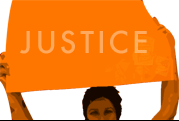resources
 Data, storytelling, news apps, visualization, tools, and resources — The Data Driven Journalism Handbook is a great resource for NGOs, too. A nice complement to Visualizing Information for Advocacy.
Data, storytelling, news apps, visualization, tools, and resources — The Data Driven Journalism Handbook is a great resource for NGOs, too. A nice complement to Visualizing Information for Advocacy.Telling Stories with Photographs
Leigh Vogel, a professional photographer, working with the Center for Social Impact Communication at Georgetown has published an excellent little primer on the use of photography by NGOs:
Images can play a vital role in how effectively messages can reach various audiences. When images accompany text or a story, which element makes the difference in engaging the reader or viewer? Which motivates one to act? Using images strategically in external and internal communications planning and execution can be a vital component of success for an organization.
In addition to “reading” photos, topics include legal rights, photo sharing and distribution, and managing your archive.
Page through below or download as a PDF. (via)
The events are co-organized by The Noun Project which hosts a large number of public domain and creative-commons license icons you can download.
Influencing Behavior through Design
“All design influences our behaviour, but as designers we don’t always consciously consider the power this gives us to help people, (and, sometimes, to manipulate them).”
Dan Lockton has posted a fantastic resource, Design with Intent. Formerly known as Architecture of Control, this book of cards features 101 design patterns for influencing behavior through form, feedback, and interface. The techniques span media from architecture and product design, to signage, interaction and graphic design and influence users by making choices easy, difficult, confusing or fun in sometimes subtle or provocative ways. The cards are organized by mode as follows:
You can download the complete set here. It’s a great primer on interaction design in the real world and a useful lens for looking at the politics of access and usability and the quiet frameworks of design and power that shape our daily lives.
Mapping Your Audience, 1
Nancy Duarte’s Slide:ology is one of my favorite design books. And this bit is particularly great: seven questions to help understand your target audience. Though intended as a guide for your design process, I think this touches something very human and applies not just to information architecture and design, but to political advocacy as well.
I’ve shamelessly adapted a version of this for a talk on design and advocacy, but here’s the raw source:
Seven Questions to Knowing Your Audience
“The audience didn’t come to see you, they came to see what you can do for them. If you fill out this audience persona slide, it will give you insights into how to present in a way that will resonate with your audience.
- What are they like?
Demographics and psychographics are a great start, but connecting with your audience means understanding them on a personal level. Take a walk in their shoes and describe what their life looks like each day.
- Why are they here?
What do they think they’re going to get out of this presentation? Why did they come to hear you? Are they willing participants or mandatory attendees? This is also a bit of a situation analysis.
- What keeps them up at night?
Everyone has a fear, a pain point, a thorn in the side. Let your audience know you empathize—and offer a solution.
- How can you solve their problem?
What’s in it for the audience? How are you going to make their lives better?
- What do you want them to do?
Answer the question “so what?” Make sure there’s clear action for your audience to take.
- How might they resist?
People vary in how they receive information. This can include the set up of the room to the availability of materials after the presentation. Give the audience what they want, how they want it.
- How can you best reach them?
What will keep them from adopting your message and carrying out your call to action?
You can also download it from Duarte Design as a PowerPoint slide.
Update 11/1/09: The voting is over and re-nourish has placed in the top three in the People’s Design Awards! They’ve released a statement about the awards and the implications for sustainable graphic design.
 Do you know a peace or social justice organization who need a mass produced poster to further their work? “The Serve the People Poster Project is a donation offered by Design Action Collective and Inkworks Press to your organization. All you have to do is present an idea, and if selected, Design Action will donate $1000 of design, and Inkworks will print 1000 full color, tabloid sized posters for you use as you wish. For free.” In particular, they are looking for: “issues that are difficult to find foundation funding for, either because of subject matter or timeliness.” Very cool! Find out more.
Do you know a peace or social justice organization who need a mass produced poster to further their work? “The Serve the People Poster Project is a donation offered by Design Action Collective and Inkworks Press to your organization. All you have to do is present an idea, and if selected, Design Action will donate $1000 of design, and Inkworks will print 1000 full color, tabloid sized posters for you use as you wish. For free.” In particular, they are looking for: “issues that are difficult to find foundation funding for, either because of subject matter or timeliness.” Very cool! Find out more.
 A free publication to help aid organizations use geospatial tools and methods in their work in emergencies. It’s published by MapAction, an NGO that works specifically on mapping for humanitarian emergencies, deploying volunteer GIS professionals around the globe.
A free publication to help aid organizations use geospatial tools and methods in their work in emergencies. It’s published by MapAction, an NGO that works specifically on mapping for humanitarian emergencies, deploying volunteer GIS professionals around the globe.See also Mapping for Advocacy, a collection of 10 case studies, and Maps for Advocacy a more general introduction to geographical mapping techniques for NGOs. Both booklets are free to download. While not specifically oriented for NGOs, Making Maps is an also excellent general primer. The Making Maps blog hosts some interesting discussion as well.

